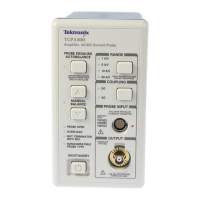Compliance Information
Table 1: Safety compliance information (cont.)
Category Standards or description
Pollution Degree Descriptions
A measure of the contaminates that could occur in the environment around and within a
product. Typically the internal environment inside a product is considered to be the same
as the external. Products should be used onl y in the environment for w hich they are rated.
Pollution Degree 1. No pollution or only dry, nonconductive pollution occurs. Products in
this category are generally encapsulated, hermetically sealed, or located in clean rooms.
Pollution Degree 2. Normally only dry, nonconductive pollution occurs. Occasionally a
temporary conductivity that is caused by condensation must be expected. This location
is a typical office/home environment. Temporary condensation occurs only w hen the
product is out of service.
Pollution Degree 3. Conductive pollution, or dry, nonconductive pollution that becomes
conductive due to condensation. These are sheltered locations where neither temperature
nor humidity is controlled. The area is protected from direct sunshine, rain, or d irect w ind.
Pollution Degree 4. Pollution that generates persistent conductivity through conductive
dust, rain, or snow. Typical outdoor locations.
Equipment Type Test and measuring
Safety Class Class 1 (as defined in IEC 61010-1, Annex H) – grounded product
Overvoltage Category Overvoltage Category II (as defined in IEC 61010-1, Annex J)
Pollution Degree
Pollution Degree 2 (as defined in IEC 61010-1). Note: Rated for indoor use only.
1
The TCP305A and TCP312A Current Probes are exempt from the Low Voltage Directive and are not third-party listed. However, they have been evaluated to
applicable safety standards.
TCPA300/400 Amplifiers and TCP300A/400 Series Current Probes User Manual ix

